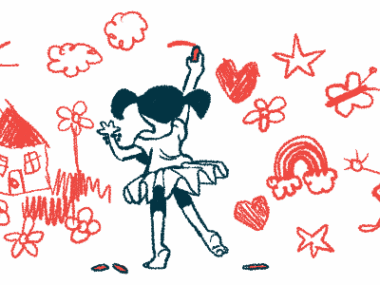Living in Recovery Limbo After a Porphyria Hospitalization
Written by |

My mind adjusted as my eyes took in my bedroom, with the shades drawn and the morning light pushing through. After a week in the hospital, I’d grown accustomed to the tubing snaking out of my chest, the guardrails of my bed, and the periodic beeping of my pumps. At home, I am no longer encumbered by machines, poked by nurses, or questioned by doctors every day. And yet, my body is far from recovered.
Acute hepatic porphyria is characterized by episodes of intense pain and neurovisceral symptoms that can be life-threatening. I endure at least one of these attacks per month, but can manage the majority of them outpatient, on my own.
When hospitalized, my body’s levels are monitored and I’m fed a continuous drip of glucose and saline, as well as medications to treat pain, anxiety, insomnia, nausea, migraines, and constipation. I am discharged as my pain dissipates and my energy returns.
Leaving the hospital, I don’t feel “all better.” But I am ready to safely return home, into the recovery limbo.
There’s no such thing as bouncing back
Three days after discharge, I stood in front of my bedroom mirror, my exhaustion wrapped around me like a robe. My eyes were red and heavy with bags; the skin on my face was sallow and tired. Despite using barrier cream, the skin surrounding my port was angry and inflamed from the adhesive. Like petals of a flower, flaky redness bloomed out from a tender center.
My muscles were sore and tired, but I could move around on my own. My stamina was shot, but I could walk my dog up the block.
Last year, after a particularly serious acute attack, I wrote a blog post titled “The Myth of Recovery.” There’s no bouncing back from an acute attack; there’s no rebounding.
After my discharge last year, I began setting new expectations for my loved ones and myself. Getting out of the hospital marks the beginning of self-care — a time when I can safely manage at home, but am in no shape to resume normal activity.
Embracing the rebuilding phase
Earlier this month, I chatted with my wise friend and Multiple Sclerosis News Today columnist Jennifer Powell about this confusing post-hospitalization time. Instead of recovery, she used the word “rebuilding.” Her choice of word resonated strongly with me. Rebuilding is an empowering way to consider this period of my life.
It is a rebuild. Often, the time following attacks requires semi-permanent changes to daily routine. Rebuilding requires monitoring daily activity levels and moving forward only when supports are stable. It requires incremental change, patience, and work.
During my rebuilding, thoughts swirl in my head about how I should feel, or what I should be doing with this precious time. I try not to buy into them. I throw the spoon theory out the window, because right now my metaphorical silverware stash is completely unreliable from day to day. I err on the side of too much sleep, max out the relaxing, and take things as I go.
What my body needs in these moments is more compassion. To read novels that provide a gentle escape, to take long showers, and to eat what sounds good. I prioritize people who fill my cup, which is how I found myself again six days after discharge, staring at my reflection.
Rebuilding after a porphyria hospitalization is a confusing and scary limbo with no rules, timeline, or day-to-day consistency. As I rebuild, making plans too far in advance is a gamble, but I had hoped to have the energy for my socially distanced book club on the patio. I swiped concealer under my eyes and put on a cozy crew neck sweater. Minutes later, I found myself sitting in backyard sunshine, among girlfriends.
Sunglasses on, I allowed the connection in our laughter to wash over me. I tipped my head back, smiling wide and feeling my anger, sadness, loneliness, and fear begin to release, to drain out of me through the healing power of sisterhood.
Slipping my feet from their shoes, I felt blades of grass brush delicate and green against my bare arches and the balls of my feet. I took a deep breath between laughs and sank my heels into the lawn, feeling grounded.
***
Note: Porphyria News is strictly a news and information website about the disease. It does not provide medical advice, diagnosis, or treatment. This content is not intended to be a substitute for professional medical advice, diagnosis, or treatment. Always seek the advice of your physician or other qualified health provider with any questions you may have regarding a medical condition. Never disregard professional medical advice or delay in seeking it because of something you have read on this website. The opinions expressed in this column are not those of Porphyria News or its parent company, Bionews, and are intended to spark discussion about issues pertaining to porphyria.






Leave a comment
Fill in the required fields to post. Your email address will not be published.